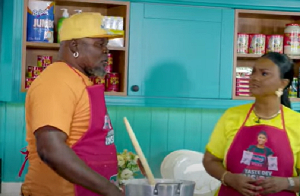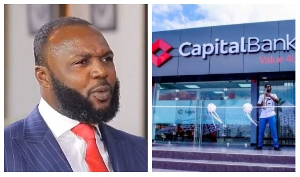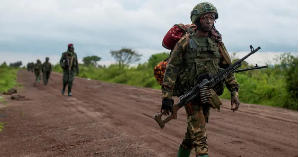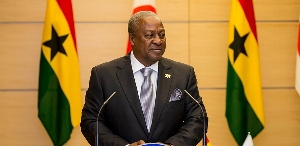The Chauffeur of the President of Ghana, Mr. Emmanuel Osafo Addo, yesterday testified in an Accra Fast Track Court that he was familiar with Mr. Thomas Osei, the Businessman who crashed into the President?s vehicle at the Opeibea House traffic light intersection in Accra late last year.
According to him, the accused person had been coming to the residence of the President over the past four years.
He however denied visiting the accused person in his house, but admitted he knew the accused person and also knew his house. Osafo Addo informed the court, presided over by Justice Emmanuel Ayebi, that he has been chauffeuring the President for seven years now. He noted that, he is a driver for state protocol attached to the office of the President. Recounting an incident that happened about four months ago, the witness said he was driving the President from his residence to the Castle in a convoy of five cars. Of the five cars, three were behind him and the other two were ahead of him. According to him, since he always traveled in a convoy, he only focused his attention ahead and did not look by his sides to see if anything or anyone was coming.
He held that, since he only focused his attention on the road ahead of him, he did not see the accused person driving towards his car at a top speed. The accused person?s car, he stated, knocked the President?s car which somersaulted several times, hit the traffic light and bumped into a Golf car which had stopped close by before falling on it?s side. He informed the court that, some of the people who had gathered around and the Police patrol team who came helped to lift the car up onto it?s wheels. He stated that, the police opened the door and the President?s Aide de Camp (ADC) helped the President out, but he did not know where he was taken to.
Quickly, he managed to come out from the car and having taken the mobile phones and other important items from the smashed car, he tried to leave too. But after constant persistence from the Police patrol team, he agreed to be taken to the hospital where he was treated and discharged. He informed the court that, it was when he was at the hospital that he saw the accused person who had a cut on his forehead and also the driver of the Golf car. Witness denied being taken to the hospital in an ambulance together with the driver of the Golf vehicle. He asserted that, there was no car driving on the side of the President?s vehicle. Earlier the owner of the VW Golf vehicle also testified, followed by ACP Emmanuel Raymond Asante, attached to the Amour Cars Squadron Unit.
ACP Asante told the court that the convoy had motor bikes, Police pilot cars and backup cars. He held the view that, all the vehicles had sirens fitted in them including the President?s car. ?These sirens starts immediately the President leaves his residence or wherever he was,? he indicated.He also said that, he was not on the same route with the convoy, thus could not tell whether the President?s car was without a convoy. He admitted that, he could not tell whether the siren was off whilst the President was being driven to the Castle because he was not with them.
The accused person, Thomas Osei, is facing charges of dangerous driving contrary to Section 1 of the Motor traffic offences Act 2004(Act 683), negligently causing harm contrary to Section 72 of the Criminal offences Act 1960, (Act 29), driving under the influence of Alcohol contrary to Section 4 of the Road Traffic Act 2004, failing to give way to the Presidential convoy?s siren contrary to Regulation 14 of Road Traffic Regulation 1974 (L.I. 952) and the use of narcotic drugs contrary to Section 5 of the Narcotic Drug (Control Enforcement and Sanctions) law 1990 PNDCL 236.
He had pleaded not guilty to all the charges leveled against him. The fact of the case is that, the accused person on November 14, 2007, at the Opeibea House traffic light intersection, drove a vehicle with registration number GT 2989 W in a dangerous manner that he ignored all signs to stop and as a result crashed into the President?s vehicle in a convoy which was driving past at the time.
Additionally, prosecution noted that, the accused person at the time of the accident was under the influence of alcohol which measured 0.41% on the Alco-sensor III as he failed to stop when he was being signaled to do so by a police officer on traffic duty. Prosecution further told the court that, immediately after the accident, a laboratory test conducted on the urine of the accused person proved positive for cocaine, which he had used without lawful authority.
Click to view details



General News of Saturday, 9 February 2008
Source: The Chronicle

















